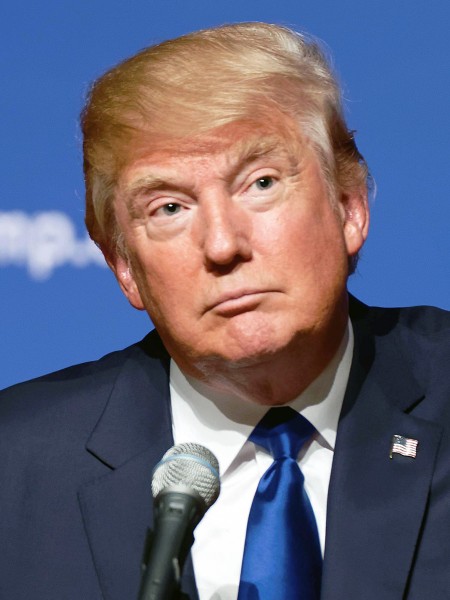 President-elect Donald Trump has blamed free trade for much of America’s economic problems. He argues that cheap imports from China, partly from an undervalued yuan, have led to a loss of jobs and to large-scale income flows from the USA to China. “They have taken our jobs; they have taken our money; and on top of that they have loaned the money to us and we actually pay them interest now on money,” he claimed to The Economist.
President-elect Donald Trump has blamed free trade for much of America’s economic problems. He argues that cheap imports from China, partly from an undervalued yuan, have led to a loss of jobs and to large-scale income flows from the USA to China. “They have taken our jobs; they have taken our money; and on top of that they have loaned the money to us and we actually pay them interest now on money,” he claimed to The Economist.
And it’s not just trade with China that he criticises. He sees cheap imports from developing countries generally as undermining US jobs. The solution he advocates is the imposition of tariffs on imports that threaten US jobs and scrapping, or fundamentally renegotiating, trade deals.
He refers to NAFTA – the North American Free Trade Agreement with Canada and Mexico – as the worst trade deal in US history and blames it for the loss of thousands of US manufacturing jobs. He has said that he will demand better terms from Mexico and Canada. If they don’t agree to them, he’d pull the USA out of NAFTA altogether.
A more recent trade agreement is the Trans-Pacific Partnership (TPP) with 11 other Pacific rim countries (but not including China). The agreement was signed on 4 February 2016, but is awaiting ratification from member countries. Amongst other things, the agreement cuts over 18,000 tariffs. Donald Trump has said that he would block the deal, even though it would lead to the elimination of tariffs on most US manufactured and agricultural products exported to the other countries. He argues that it would lead to a large-scale loss of US jobs from cheap imports.
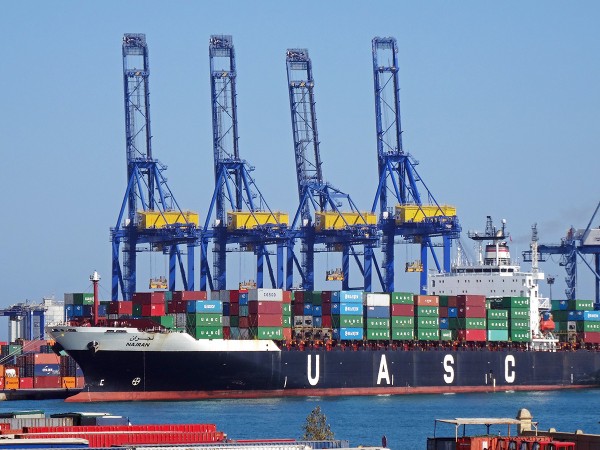 Another major trade deal criticised by Trump is that being negotiated between the USA and the EU – the Transatlantic Trade and Investment Partnership (TTIP). It has already faced fierce opposition in Europe, with many fearing that it would give too much power to US corporations in their operations in Europe. With the opposition from Trump, it looks unlikely that the agreement will be signed, even in an amended form.
Another major trade deal criticised by Trump is that being negotiated between the USA and the EU – the Transatlantic Trade and Investment Partnership (TTIP). It has already faced fierce opposition in Europe, with many fearing that it would give too much power to US corporations in their operations in Europe. With the opposition from Trump, it looks unlikely that the agreement will be signed, even in an amended form.
So is this more protectionist stance by Donald Trump in America’s interests? The main argument against restricting imports is that people generally in the USA would be poorer. This is the prediction from the law of comparative advantage. Trade allows a country to consume beyond its production possibility curve by specialising in the production of goods with relatively low opportunity costs and importing goods which would have had a higher opportunity cost if they were produced domestically (see, for example, Economics, 9th edition, pages 711–4). By imposing tariffs or other restrictions on cheap imports, consumers would end up paying more for such goods if they now have to be produced domestically. Cheap Chinese t-shirts would be replaced by expensive US ones. Real US incomes would be lower.
Another danger of pursuing protectionist policies is that other countries might retaliate. Trade wars might result, with the world ending up poorer.
Then there is a problem of locating products. It is not a simple question of saying a product is made in the USA or elsewhere. With complex modern supply chains, many products use components and services, such as design and logistics, from many different countries. Imposing restrictions on imports may lead to damage to products which are seen as US products.
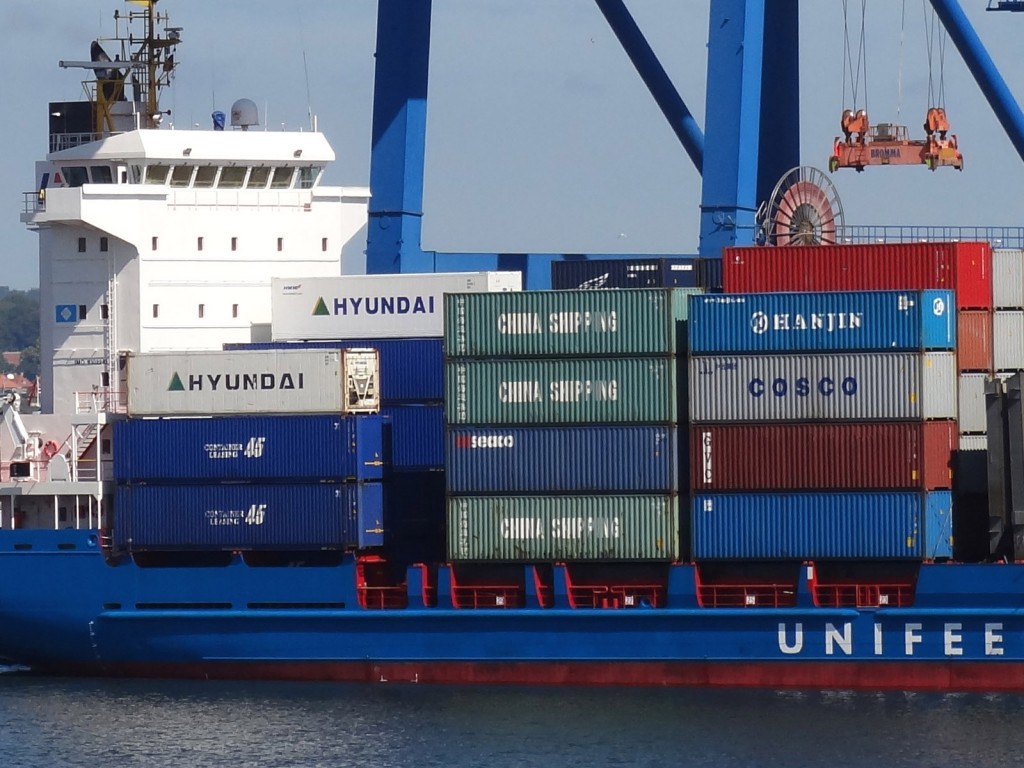 An open trade policy, by contrast, not only leads to higher consumption, it stimulates economic growth and the extra competition it creates improves domestic productivity. As the pro-free trade article by Graeme Leach, linked below, argues:
An open trade policy, by contrast, not only leads to higher consumption, it stimulates economic growth and the extra competition it creates improves domestic productivity. As the pro-free trade article by Graeme Leach, linked below, argues:
There is overwhelming evidence that free trade improves economic performance by increasing competition in the domestic market. Trade disciplines domestic firms with market power, and simultaneously promotes productivity growth. Research also shows that a 10 per cent increase in trade leads to a 5 per cent increase in per capita income. More open trade policies are associated with higher per capita incomes.
And as the article by Clark Packard argues:
There is no question that America’s middle and lower classes have benefited from our trade liberalization. Through the widely accepted principle of comparative advantage in our trade policies, productivity has surged and prices have declined. Lower prices save the average American family thousands of dollars a year on goods they consume, raising the standard of living through enhanced purchasing power.
Despite these arguments, there is one crucial problem with free trade. Although overall levels of consumption may be higher, trade may make some people poorer. If workers in the US steel or garment industries lose their jobs because of cheap imports, they will certainly feel worse off, especially if there is no prospect of them getting another job elsewhere. They may lack transferable skills or have too many family or personal ties to move elsewhere in the country.
The government could help to ameliorate the problems of those made unemployed by providing retraining or resettlement grants or by investing in infrastructure projects that require relatively low skilled, but local, construction workers. But, as the Forbes article states:
It is in helping displaced workers of all types that US government, as well as the leaders of other rich countries, have largely failed. Little has been done to assist laid-off workers whose industries simply cannot compete in developed countries anymore.
What is more, inequality has been growing in the USA, and in most other developed countries too.  International trade and investment and the growing concentration of power in large corporations has meant that most of the gains from trade have gone to the richest people. Many of the poor blame trade for their plight and the argument that they have still made some gains is either not believed or is not enough to appease them.
International trade and investment and the growing concentration of power in large corporations has meant that most of the gains from trade have gone to the richest people. Many of the poor blame trade for their plight and the argument that they have still made some gains is either not believed or is not enough to appease them.
An interesting insight into why people may have voted for Trump and his policy of protectionism is provided by the Ultimatum Game (see also). As the final article below explains:
The game itself involves two players. The first player receives a sum of money, and gets to propose how to divide it between the two players. The second player can do only one thing: accept or reject the proposal. If the second player accepts, then the money is divided between the two players as proposed. But if the second player rejects the proposal, then neither player gets anything.
It might seem that the rational thing for the second person to do is to accept whatever the first person proposes, however little it gives to the second person providing it is something – after all, even a little is better than nothing. But experiments show that people playing the second person do not behave in that way. They seek a fair distribution. If the proposed distribution is perceived as unfair, they would prefer to reject the proposal, with both players getting nothing.
This may help to explain the psychology of poor blue-collar workers. They would rather punish the rich a lot, and possibly themselves a little, than let the rich continue getting richer while they are stuck on low wages with little prospect for improvement. But, of course, they may also believe Trump’s rhetoric that they will indeed be better off from protectionist policies that help save their jobs.

What precisely Donald Trump will do about trade agreements and protection, we will have to wait and see. Often what is pledged in an election campaign is not carried out in office or is substantially watered down.
Articles
How Donald Trump thinks about trade The Economist (9/11/16)
What President Trump’s victory means for the most important trade deal in the world Independent, James Moore (9/11/16)
Trump and trade: A radical agenda? BBC News, Ben Morris (9/11/16)
Trump could change trade stance, says former Bush adviser BBC News, Tom Espiner (11/11/16)
3 Ways President-Elect Trump May Shake Up Trade Policy NPR, Marilyn Geewax (9/11/16)
Donald Trump Win to Upend Trade Policy Nasdaq, William Mauldin and John Lyons (9/11/16)
Stiglitz Grades Donald Trump an F on Economics Bloomberg, Enda Curran and Angie Lau (19/9/16)
Trump can kill trade deals but he can’t kill globalisation The Conversation, Remy Davison (10/11/16)
Anti-free trader Donald Trump is on a collision course with economic reality City A.M., Graeme Leach (9/11/16)
What Trump And Clinton Both Get Wrong On Trade Forbes, Simon Constable (4/11/16)
The Rabble Understands Trade Pretty Well Huffington Post, Brad Miller (4/11/16)
Contrary to Donald Trump’s claims, free trade benefits the poorest Americans U.S.News, Clark Packard (27/10/16)
The Meaning of Open Trade and Open Borders The New Yorker, Bernard Avishai (17/10/16)
We just saw what voters do when they feel screwed. Here’s the economic theory of why they do it. Quartz, James Allworth (9/11/16)
Questions
- Use a simple two-product production possibility diagram to demonstrate the possible consumption gains to a country from trading with another country and specialising in exporting the good in which it has a comparative advantage.
- Search Donald Trump’s speeches to identify statements he has made about the trade policies he will pursue as president.
- Explain why some people may gain more from free trade than others. Why do the people who have gained the most tend to be the richest people?
- What are the arguments for and against the free movement of labour (a) within countries; (b) between countries?
- Compare the relative benefits and costs of tariffs and various forms of administrative constraints on trade.
- If the second player in the ultimatum game rejects an ‘unfair’ offer, should this behaviour be described as ‘irrational? Explain.
- Find out the details of the Trans-Pacific Partnership agreement. In what ways, other than through increased trade, would the agreement benefit the residents of the member countries?
- Does free trade threaten employment in the long term? Explain.
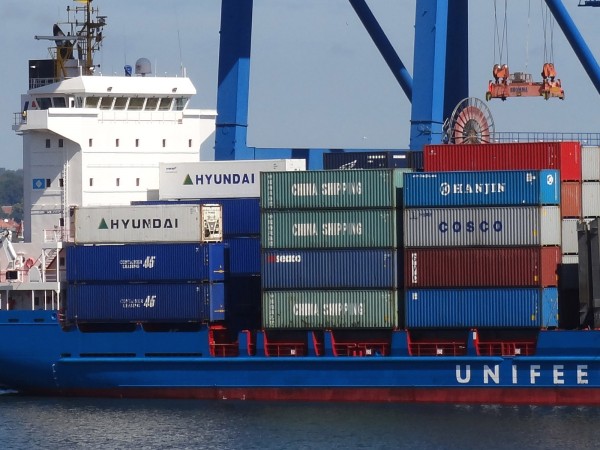 According to the law of comparative advantage, trade can benefit all countries if they export goods which they can produce at lower opportunity costs than their trading partners. Trade enables all countries to consume beyond their production possibility frontier. What is more, trade can increase competition, which encourages firms to be more efficient.
According to the law of comparative advantage, trade can benefit all countries if they export goods which they can produce at lower opportunity costs than their trading partners. Trade enables all countries to consume beyond their production possibility frontier. What is more, trade can increase competition, which encourages firms to be more efficient.
That trade is beneficial has been generally accepted by governments around the world since the Second World War, with the General Agreement on Tariffs and Trade (GATT) and then the World Trade Organization (WTO) advocating the dismantling of trade barriers. Countries have participated in a series of trade ’rounds’, such as the Uruguay Round (1986–94) and most recently the Doha Round (2001–15). But since the financial crisis of 2008, there has been waning enthusiasm for freer trade and growing calls to protect strategic and/or vulnerable industries. To some extent this mirrors the growth in protection after the Great Depression of the early 1930s as countries sought to boost their own industries.
After some progress in the Doha round talks in Nairobi in December 2015, the talks effectively marked the end of a fourteen-year road for the round (see also). There was a failure to agree on a number of items and chances of resurrecting the talks seem slim.
 The classic response to calls for protection is that it can lead to a trade war, with a net loss in global output as less efficient domestic industries are shielded from competition from lower-cost imports. Consumers lose from no longer having access to cheaper imported goods. Trade wars, it is argued, are a negative sum game. Any gains to one country are more than offset by losses elsewhere. In fact, it is likely that all countries will lose.
The classic response to calls for protection is that it can lead to a trade war, with a net loss in global output as less efficient domestic industries are shielded from competition from lower-cost imports. Consumers lose from no longer having access to cheaper imported goods. Trade wars, it is argued, are a negative sum game. Any gains to one country are more than offset by losses elsewhere. In fact, it is likely that all countries will lose.
One argument for protection recognises the efficiency gains from free trade, but argues that current trade is distorted. For example, countries may subsidise the export of products in which they have a comparative disadvantage and dump them on the rest of the world. The WTO recognises this as a legitimate argument for tariffs, if they are used to offset the effect of the subsidies and make import prices more reflective of the cost of production.
But increasingly arguments go beyond this. Industries that are regarded as strategic to a country’s future, such as the steel industry or agriculture, are seen as warranting protection. With protection, investment may flow to such industries, making them more efficient and even gaining a comparative advantage at some point in the future.
Then there is the question of income distribution. Trade with poor countries may help to close the gap somewhat between rich and poor countries. The reason is that poor countries, with an abundance of labour, are likely to have a comparative advantage in labour-intensive products. The demand for exports of such products will help to drive up wages in such countries. However, income distribution within the rich countries may become less equal. Cheap imports from developing countries may depress the wages of unskilled or low-skilled workers in the rich countries.
Another argument concerns the devastation caused to communities by the closure of plants which are major employers. Workers made redundant may find it hard to find alternative employment, especially if their skills are specific to the plant that has closed. At least in the short term, it is argued that such industries warrant protection to allow time for alternative employers to be attracted into the area.
Arguments such as these are being used today in many countries as they struggle with slowing growth in China, a glut of global resources and overcapacity in certain industries.
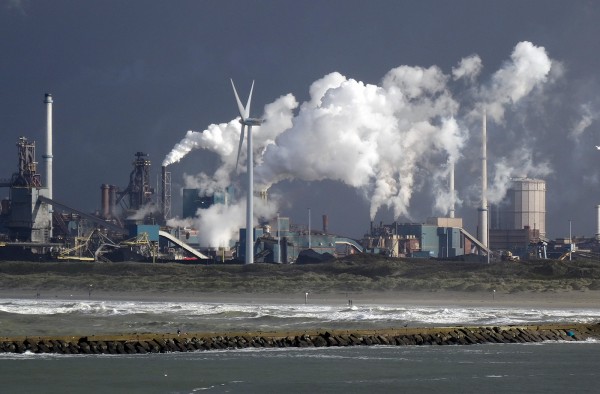 The steel industry is a case in point. The announcement by Tata Steel that it intends to close the Port Talbot steel works has been met with consternation and calls for protection against subsidised Chinese steel imports. The USA already imposes tariffs of 256% on corrosion-resistant Chinese steel. The EU has proposed raising tariffs on Chinese steel to the full amount of the subsidy, but the UK has blocked this, not wishing to trigger a trade war with China. In the meantime, China has announced the imposition of a tariff of 46% on a particular type of hi-tech steel imported from the EU.
The steel industry is a case in point. The announcement by Tata Steel that it intends to close the Port Talbot steel works has been met with consternation and calls for protection against subsidised Chinese steel imports. The USA already imposes tariffs of 256% on corrosion-resistant Chinese steel. The EU has proposed raising tariffs on Chinese steel to the full amount of the subsidy, but the UK has blocked this, not wishing to trigger a trade war with China. In the meantime, China has announced the imposition of a tariff of 46% on a particular type of hi-tech steel imported from the EU.
On the other side of the Atlantic, there have been growing protectionist calls from presidential front runners. Donald Trump and Ted Cruz on the Republican side, and Bernie Sanders and now Hilary Clinton on the Democratic side, are opposed to the trade agreement that President Obama has been seeking with the EU – the Transatlantic Trade and Investment Partnership (TTIP). Donald Trump has proposed imposing tariffs of 45% on all Chinese imports.

The following articles look at the growing calls for protection, especially against China, and at the arguments about what should be done to protect the UK and EU steel industry.
Articles
Defiant China slaps steel tariffs on Britain as trade war looms The Telegraph, Ambrose Evans-Pritchard (1/4/16)
China’s soaring steel exports may presage a trade war, The Economist (9/12/15)
Trade, at what price? The Economist (30/3/16)
Free trade in America: Open argument The Economist (2/4/16)
Can the British steel industry be saved? Financial Times (2/4/16)
Steel crisis: UK government plays down China tariff fears BBC News (2/4/16)
The dogmas destroying UK steel also inhibit future economic growth The Observer, WIll Hutton (3/4/16)
UK accused of leading efforts to block limits to Chinese steel dumping The Guardian, Frances Perraudin (1/4/16)
There’s always an excuse to justify suspending free trade – Tata is the latest The Telegraph, Allister Heath (1/4/16)
Can one of the world’s top economies live without making steel? Bloomberg, Thomas Biesheuvel (1/4/16)
Trade policy is no longer just for political nerds: it matters in the UK and US The Guardian, Larry Elliott (27/3/16)
Steel shrivels while Britain’s balance of payments crisis grows The Observer, WIlliam Keegan (3/4/16)
Trump’s tariff plan could boomerang, spark trade wars with China, Mexico Reuters, David Lawder and Roberta Rampton (24/3/16)
Analysis: A Trump trade war could cost the U.S. millions of jobs Daily Herald (Chicago), Jim Tankersley (3/4/16)
Questions
- What is meant by the ‘law of comparative advantage’? Does the law imply that countries will always gain from totally free trade?
- Demonstrate the gains for each of two countries which choose to trade with each other (see, for example, pages 711–3 in Economics, 9th edition).
- What is meant by ‘strategic trade theory’? How would such theory relate to the case of steel production in south Wales?
- What are the arguments for and against the EU imposing tariffs on Chinese steel imports equal to the subsidy given by the Chinese government?
- Is protectionism always a negative sum game? Explain.
- Assess the validity of various arguments for protection.
- Why did it prove impossible to complete the Doha round?
- What is meant by the ‘Transatlantic Trade and Investment Partnership (TTIP)’? Why is there so much opposition to it?
- Are bilateral trade deals, such as the TTIP, the best way of moving forward in reaping the gains from freer trade?
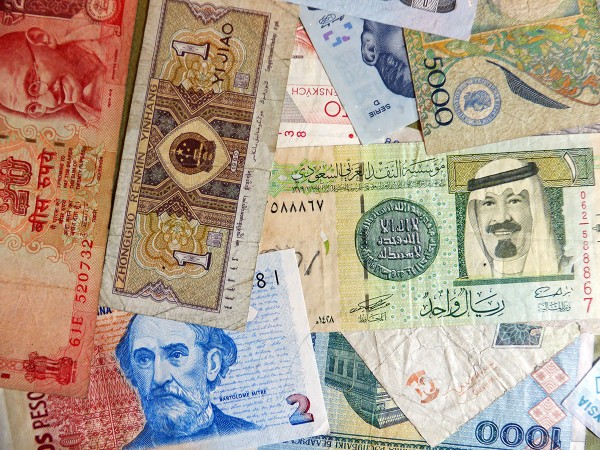 As we saw in the blog post Down down deeper and down, or a new Status Quo?, for many countries there is now a negative rate of interest on bank deposits in the central bank. In other words, banks are being charged to keep liquidity in central banks. Indeed, in some countries the central bank even provides liquidity to banks at negative rates. In other words, banks are paid to borrow!
As we saw in the blog post Down down deeper and down, or a new Status Quo?, for many countries there is now a negative rate of interest on bank deposits in the central bank. In other words, banks are being charged to keep liquidity in central banks. Indeed, in some countries the central bank even provides liquidity to banks at negative rates. In other words, banks are paid to borrow!
But, by definition, holding cash (in a safe or under the mattress) pays a zero interest rate. So why would people save in a bank at negative interest rates if they could get a zero rate simply by holding cash? And why would banks not borrow money from the central bank, if borrowing rates are negative, hold it as cash and earn the interest from the central bank?
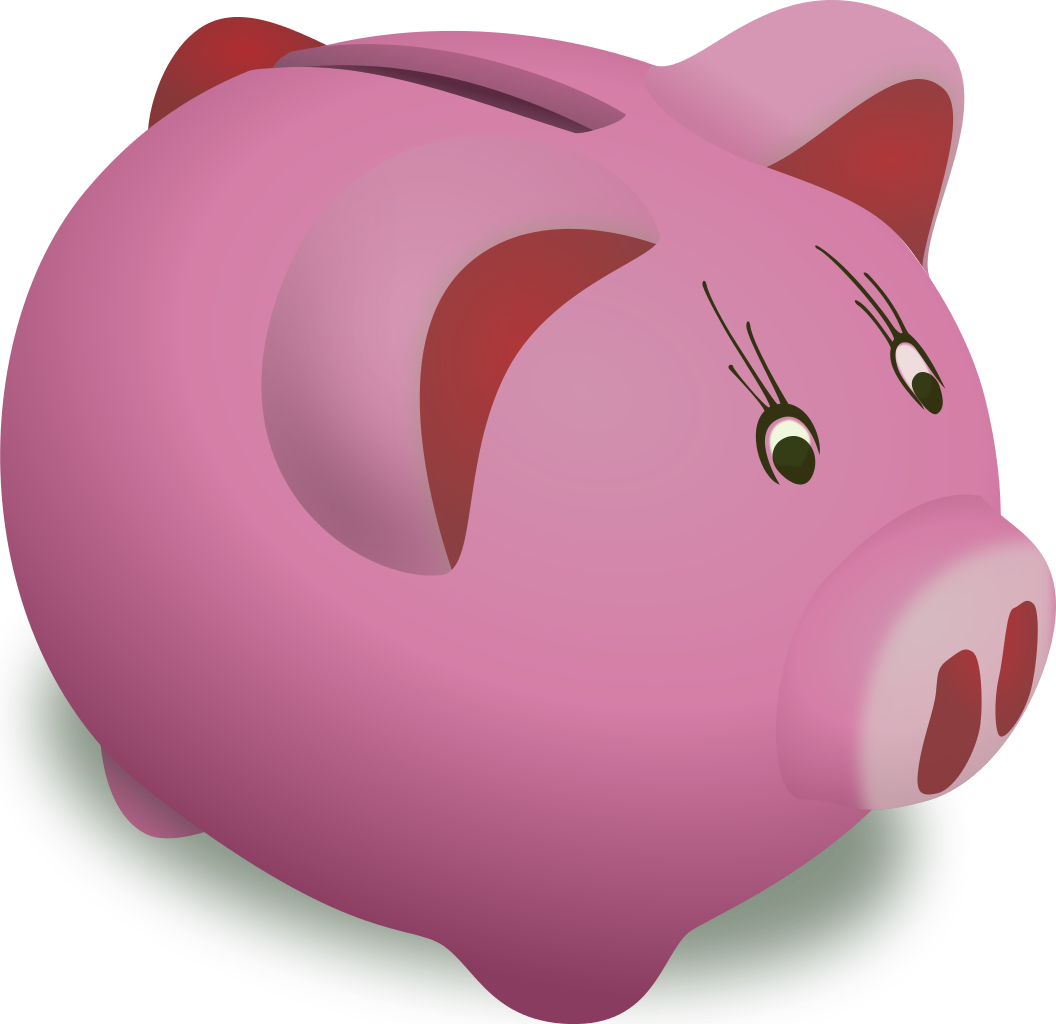 These questions are addressed in the article below from The Economist. It argues that to swap reserves for cash is costly to banks and that this cost is likely to exceed the interest they have to pay. In other words, there is not a zero bound to central bank interest rates, either for deposits or for the provision of liquidity; and this reflects rational behaviour.
These questions are addressed in the article below from The Economist. It argues that to swap reserves for cash is costly to banks and that this cost is likely to exceed the interest they have to pay. In other words, there is not a zero bound to central bank interest rates, either for deposits or for the provision of liquidity; and this reflects rational behaviour.
But does the same apply to individuals? Would it not be rational for banks to charge customers to deposit money (a negative interest rate)? Indeed, there is already a form of negative interest rate on many current accounts; i.e. the monthly or annual charge to keep the account open. But would it also make sense for banks to offer negative interest rates on loans? In other words, would it ever make sense for banks to pay people to borrow?
Read the folowing article and then try answering the questions.
Article
Bankers v mattresses The Economist (28/11.15)
Central bank repo rates/base rates
Central banks – summary of current interest rates global-rates.com
Worldwide Central Bank Rates CentralBankRates
Questions
- What is a central bank’s ‘repo rate’. Is it the same as (a) its overnight lending rate; (b) its discount rate?
- Why are the Swedish and Swiss central banks charging negative interest rates when lending money to banks?
- What effect are such negative rates likely to have on (a) banks’ cash holdings; (b) banks’ lending to customers?
- Why are many central banks (including the ECB) charging banks to deposit money with them? Why do banks continue to make such deposits when interest rates are negative?
- Would banks ever lend to customers at negative rates of interest? Explain why or why not.
- Would banks ever offer negative rates of interest on savings accounts? Explain why or why not.
- How do expectations about exchange rate movements affect banks willingness to hold deposits with the central bank?
- What are the arguments for and against abolishing cash altogether?
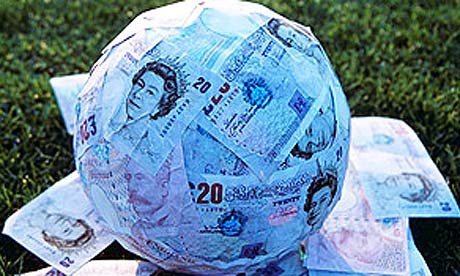 Deloitte recently published its 24th Annual Review of Football Finance and it contained some surprising results. Historically, most teams in the English Premier League (EPL) have made accounting losses with any increases in revenues being offset by higher wage costs. However, this report found that in 2013–14 most teams in the EPL actually made accounting profits.
Deloitte recently published its 24th Annual Review of Football Finance and it contained some surprising results. Historically, most teams in the English Premier League (EPL) have made accounting losses with any increases in revenues being offset by higher wage costs. However, this report found that in 2013–14 most teams in the EPL actually made accounting profits.
The Deloitte’s review reported that the combined operating profits of clubs in the EPL increased from £82 million in 2012–13 to £614 million on 2013–14 – an enormous increase of 649%. Nearly all of the teams (19 out of 20) in the league made an operating profit while 14 also reported pre-tax profits. Dan Jones, head of Deloitte’s Sports Business Group, commented that:
“The change in club profitability in 2013–14 was more profound than anything we could have forecast.”
Why has the profitability of teams in the EPL suddenly improved so dramatically? One important factor was the significant increase in revenue. The combined income of the teams was £3.26 billion in 2013–14 – an increase of £735 million, or 29% on the previous year. Although match-day and commercial revenue both increased, the majority of this growth in income (nearly 80%) came from the sale of broadcast rights. The 2013–14 season was the first year of a new three-year contract that raised over £1.7 billion per year from the sale of these rights in both the UK and overseas.
However, clubs in the EPL have received big increases in revenue from TV deals before and still made substantial accounting losses. For example, the broadcasting contract that ran from 2010–13 generated over £1.1 billion per season – a £243 million per annum increase on the previous deal. Significantly, in the first year of this deal (2010–11), 81% of this increase in revenue went straight into higher player salaries, whereas in 2013–14 this figure was only 16%. The ratio of wages to turnover also fell from 71% in 2012–13 to 58% in 2013–14
So why did a smaller proportion of the increase in revenue go to the players compared with previous years? The explanation appears to be the impact of two new controls and regulations that were implemented by the EPL at the beginning of the 2013–14 season.
One of these has received considerable media attention and is similar to UEFA’s Financial Fair Play regulations. The Profitability and Sustainability Rules allow the clubs to make a maximum cumulative loss of £105 million over three seasons before having to face sanctions from the league. The size of the permissible loss is significantly higher than in the UEFA regulations.
The other control that has received far less attention is called Short-Term Cost Control (STCC). This regulation places limits on the extent to which clubs can increase their total wage bill. It operates from 2013–14 to 2015&ndash16: i.e. it covers the same three years as the current TV deal. For the 2013–14 season it worked in the following way.
If teams had a wage bill of less than £52 million they faced no restrictions on their spending on players’ salaries. Only Crystal Palace (£46 million) and Hull City (£43 million) fell into this category. Unsurprisingly, the five biggest spending clubs, Man Utd, Man City, Chelsea, Arsenal and Liverpool, had much greater wage bills of £215m, £205m, £192m, £166m and £144m respectively.
Any of the 18 teams that exceeded the £52m limit would still not face sanctions if their wage bill increased by £4 million or less. For example, Stoke City’s wage bill only increased from £60m to £61m, while Tottenham Hotspur’s increased from £96m to £100m. Some clubs actually managed to reduce their total wage bill, including the champions, Manchester City, which managed to lower its from £233m to £215m.
However, there were still 12 teams with a total wage bill that was greater than £52 million in 2013–14 and which had increased by more than £4 million on the previous year. For these teams not to face any sanctions, they had to prove to the EPL that any of the increase above £4 million was either due to player contracts entered into before January 2013 or could by financed from the following two sources.
• Club Own Revenue Uplift
• Profit from player transfers
Whereas the profit from player transfers is straightforward, the ‘Club Own Revenue Uplift’ requires some explanation, as it excludes a very important part of teams’ incomes – Central Fund payments.
Some revenues earned by clubs in the EPL are referred to as ‘Central Fund payments’. These are, in effect, income payments from money that is raised centrally by the EPL on behalf of the clubs and then distributed to the teams using an agreed formula. The majority of the revenue generated under this category is from the broadcast deals, although some commercial income, such as the sponsorship of the league, also falls under this category. For some teams the money raised from Central Fund payments makes up the majority of their revenue.
‘Club Own Revenue’ in STCC calculations refers to all revenues other than those from Central Fund payments. This includes a number of income streams that the club has more direct control over. They include:
• Gate money/other match-day revenue
• Commercial deals negotiated by the individual club
• Income from playing in European competitions, including TV revenue.
The uplift refers to increases in revenue from these sources compared to 2012–13.
For example, assume a club has made no profit from its transfer dealing and did not enter into any significant player contracts prior to January 2013. If this club’s wage bill increased from £100m in 2012–13 to £110m in 2013–14 then it would have to provide evidence to show that £6m of this increase could be financed from growth in its Club Own Revenue. In other words, it would have to demonstrate how its income from gate money, commercial deals and playing in Europe was at least £6m higher in 2013–14 than it had been in 2012–13.
It will be interesting to see if (1) the profitability of the clubs continues to improve in future years and (2) the STCC regulations are extended when the new broadcast deal comes into effect in 2016–17.
The EPL Proves Cost Control Works The Judge 13 (4/6/15)
English Premier League clubs made more revenue than Spain and Italy’s clubs combined UK Business Insider, Lianna Brinded (4/6/15)
Premier League football club revenues and profits soar BBC News, Bill Wilson (4/6/15)
Deloitte Premier League list: Clubs’ revenue boom to £3.3billion as Tottenham record highest ever pre-tax profits after Gareth Bale transfer The Independent, Joanna Bourke (4/6/15)
Annual Review of Football Finance 2015 Premier League clubs generate over £3bn revenue in season of records Deloitte (4/6/15)
Premier League top of the rich list with record income of £3.26bn The Guardian, David Conn (4/6/15)
Questions
- What is the difference between an operating profit and a pre-tax profit?
- If a club reports that it is making an accounting profit, does this mean that it must be making an economic profit? Explain your answer.
- Give some examples of the economic costs of running a football club that might not be included in accounting calculations of profit.
- How is the profit/loss from player transfers calculated?
- Explain why the current rules may give teams that play in European competitions a competitive advantage.
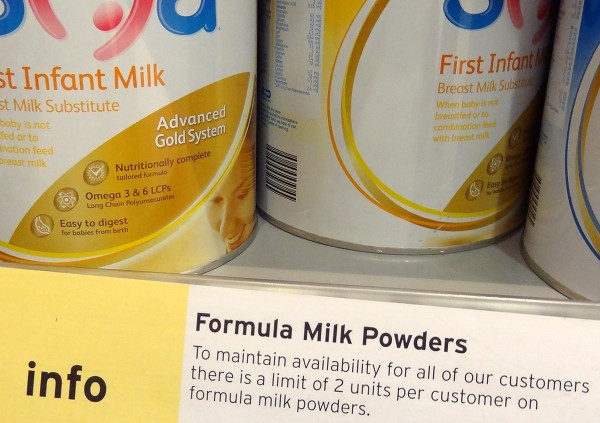 In the UK, we take it for granted that if you need to see a doctor, you go and give little, if any thought, to the cost. It may be petrol costs, time off work or the cost of a prescription, but beyond that, receiving treatment is free at the point of use. Funded through a progressive tax system, the NHS is seen as being one of the more equitable health care systems.
In the UK, we take it for granted that if you need to see a doctor, you go and give little, if any thought, to the cost. It may be petrol costs, time off work or the cost of a prescription, but beyond that, receiving treatment is free at the point of use. Funded through a progressive tax system, the NHS is seen as being one of the more equitable health care systems.
When a mother gives birth, the main thing she will have to worry about is the labour – and not whether to have certain painkillers or stay an extra night, because of the cost.
The International Federation of Health Plans (IFHP) looked at data on the cost of giving birth, based on insurance company payments. For someone living in the UK, the figures make for quite astonishing reading. In the USA, a normal delivery will cost $10,000, while a caesarean totals $15,000, meaning that giving birth in the USA is the most expensive place in the world. The article linked below takes the case of Mari Roberts, whose total delivery bill came to over $100,000. The insurance did cover it, but that’s not always the case. Medical bills in the United States are one of the leading reasons for bankruptcy and with these types of figures, perhaps it’s hardly surprising.
Other countries also see high costs for delivery, where expectant mothers really do need to give consideration to the length of their stay in hospital and perhaps even whether they are willing to forgo a pain-relieving drug and save some money. There is often said to be an efficiency–equity trade-off in the area of healthcare, with countries offering a free at the point of use service delivering an equitable system, but with a lack of responsiveness to the demands of the patients. In the UK, you don’t pay to see a doctor but, with a ‘free’ service, demand is understandably very high, thus creating a shortage and waiting lists. In countries, such as the USA, a higher price for treatment does limit demand, creating more inequity but a responsive system.
There are certainly lessons that can be learned from all health care systems and living in a developed country, we should certainly consider ourselves lucky. There are many countries where access to even the most basic health care is a luxury that most cannot afford. So, where does have the best health care system? I’ll leave that to you.
Video and article
 How much do women around the world pay to give birth? BBC News, Mariko Oi (13/2/15)
How much do women around the world pay to give birth? BBC News, Mariko Oi (13/2/15)
Report
Research for Universal Health Coverage, World Health Report 2013 World Health Organisation August 2013
Health Systems Financing: The Path to Universal Coverage, World Health Report 2010 World Health Organisation August 2010
Questions
- Using a demand and supply diagram, explain why there may be a trade-off between efficiency and equity.
- If there is over-consumption of a service such as health care, does this suggest that the market fails?
- What are the main market failures that exist in health care?
- Is the concept of opportunity cost relevant to mothers in labour? Think about the country in question.
- How would you go about ranking health care systems if you worked for an organisation such as the OECD or WHO?
- Pick a country whose health care system you are familiar with. What changes have occurred to the way in which health care is organised and financed in this country? How has it affected the key objectives that formed part of your answer to question 5?
 President-elect Donald Trump has blamed free trade for much of America’s economic problems. He argues that cheap imports from China, partly from an undervalued yuan, have led to a loss of jobs and to large-scale income flows from the USA to China. “They have taken our jobs; they have taken our money; and on top of that they have loaned the money to us and we actually pay them interest now on money,” he claimed to The Economist.
President-elect Donald Trump has blamed free trade for much of America’s economic problems. He argues that cheap imports from China, partly from an undervalued yuan, have led to a loss of jobs and to large-scale income flows from the USA to China. “They have taken our jobs; they have taken our money; and on top of that they have loaned the money to us and we actually pay them interest now on money,” he claimed to The Economist. Another major trade deal criticised by Trump is that being negotiated between the USA and the EU – the Transatlantic Trade and Investment Partnership (TTIP). It has already faced fierce opposition in Europe, with many fearing that it would give too much power to US corporations in their operations in Europe. With the opposition from Trump, it looks unlikely that the agreement will be signed, even in an amended form.
Another major trade deal criticised by Trump is that being negotiated between the USA and the EU – the Transatlantic Trade and Investment Partnership (TTIP). It has already faced fierce opposition in Europe, with many fearing that it would give too much power to US corporations in their operations in Europe. With the opposition from Trump, it looks unlikely that the agreement will be signed, even in an amended form. An open trade policy, by contrast, not only leads to higher consumption, it stimulates economic growth and the extra competition it creates improves domestic productivity. As the pro-free trade article by Graeme Leach, linked below, argues:
An open trade policy, by contrast, not only leads to higher consumption, it stimulates economic growth and the extra competition it creates improves domestic productivity. As the pro-free trade article by Graeme Leach, linked below, argues: International trade and investment and the growing concentration of power in large corporations has meant that most of the gains from trade have gone to the richest people. Many of the poor blame trade for their plight and the argument that they have still made some gains is either not believed or is not enough to appease them.
International trade and investment and the growing concentration of power in large corporations has meant that most of the gains from trade have gone to the richest people. Many of the poor blame trade for their plight and the argument that they have still made some gains is either not believed or is not enough to appease them.






